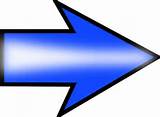
From
Garry Shead's Kangaroo series
YET
WHEN Lawrence came to re-use Rosenthal, he was, curiously,
less vindictive - even though it had been Rosenthal who
had made the deadlier threat to his person.
In fact, Rosenthal's portrait as Major Charles Eastwood
in The Virgin and the Gipsy is quite benign. Yet
the borrowing from real life is just as obvious, once
you take into account Lawrence's transposition habits.
The
novella, also published posthumously, was written in 1926,
and is in some ways a precursor to Lady Chatterley.
The name shift [Major-General Sir Charles Rosenthal=Major
Charles Eastwood] is minimal - though the name "Eastwood"
might be an echo of where the village of Rosenthal is
in Germany (see re the "Black Forest trifle"
below).
There is also an echo of Rosenthal's pseudo-Jewishness
- also see below - in the portrayal. Eastwood's wife is
"a little Jewess".
In The Virgin and the Gipsy Charles Eastwood, like
Charles Rosenthal, had been- tellingly- an artillery officer
in the war. Both had distinguished war careers.
Eastwood is a "big, blond man...athletic...a magnificent
figure, an athletic, prominent chest...powerful athletic
white arms".
Rosenthal was renowned for his robust figure (he used
to take on tug-o'-war teams single-handed) and protruding
frontal region (which is why Callcott calls him Kangaroo..."looks
like one").
However, what seals the parallel is the fact that Eastwood
in The Virgin and the Gipsy is of Danish stock,
as was Rosenthal. That cannot be coincidence.
(Lawrence
couldn't help himself - he had to tap into the memories
he had stored up in his transposition locker.)
